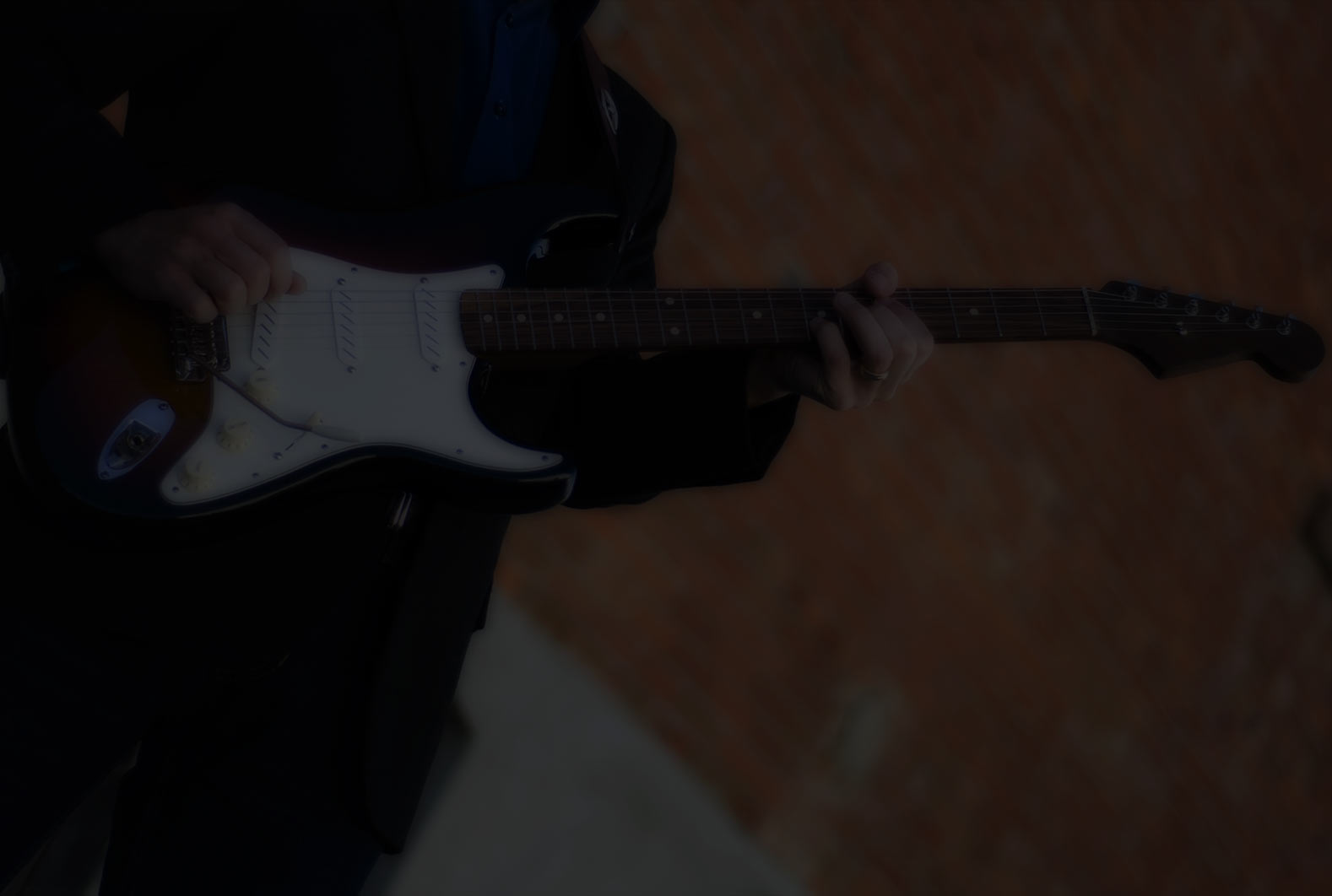I’m in Sweden until the 21st. My brother’s funeral.
While I’m sitting around at airports, let’s talk about practicing and improving.
I’ll add more to this at the next airport (Toronto).
The first thing I want you to really think about is this:
you need to have phrases or licks or musical ideas in your head AND your fingers before you try to improvise. If you don’t, it’s going to sound weak and unconvincing.
You fix that by singing or humming along to parts of solos, musical ideas, melodies, phrases, etc. This is very important.
Make time in your practice routine to figure things out by listening.
Once you can hum along to a melody or phrase, then you start figuring out how to beat play it on the guitar. This is how all experienced guitar players operate! I guarantee it works!
So have you been doing this? Ever?
No I don't think I have ever hummed along. I usually listen and then physically find key notes.
Craig, try humming along the rhythms before you look for the notes.
Maybe I will start a new idea about rhythmic phrasing... getting some ideas now. Could make it into some kind of game-like project. We will see!
When I improvise, most of it I’ve played before in some way. From my practice time, I discard those things that don’t sound great. Then when I perform, I go back to ideas I know will work well but I often attempt to make some small changes to these ideas, on the fly. Sometimes it works, sometimes it doesn’t... 🙂 Still, most of the idea has already been learned and memorized, so I’m rarely ever starting something completely new.
You can bet that most skilled improvisers operate this way. So, in some sense, it’s about how many good ideas you have memorized and can bring to life in the spur of the moment. Mixing and choosing tastefully from the ideas stored in the brain also takes time to develop. Experience here becomes your best friend. 😉
I have noticed previous ideas pop in sometimes modified by many hours of subconscious processing, so it does sound new and fresh even though I may have been refining it for sometime.
I don't feel like I am a very good "hummer" but am willing to try new things. Will give it a go and report back to you soon. 🎶🎵
It’s all about rhythm. You can tap the rhythm of licks and phrases on your knee for example. I usually go “da da da” etc (quietly) when I am trying to learn the rhythms from lines. The more you practice it, the faster you get at doing this.
What I’m referring to here is also called transcribing. We can also just call it “copying”.
Yeah nice. Can work that way anywhere, don't necessarily need a guitar at hand.
I had the good fortune many years ago of having a flamenco master living with us. The flourishes he taught were all in the right hand but you could practise them against your thigh. I found myself waiting in lines practising, sometimes drawing the strangest looks!
I'll start humming along from now on. Thanks for the suggestion.
The next tip is kind of ovbious but still needs to be said: don’t fly blind. What that means is before you can improvise freely to any extent, you need to know where the notes are on the fretboard. In other words, if you don’t know where the chord tones are, or where the notes are located for the scale you are using, you must get this down.
Now, I know it can be unsatisfying to practice scales, but it really doesn’t need to be. Think of it as you are practicing and learning the alphabet of the language you are trying to speak. You want to speak well, yeah? Not stumble, not sounding foolish, correct?
When it comes to how, I always say make music. See my open ended lessons on exploring the major scale, for example https://www.masterguitaracademy.com/lesson/exploring-the-major-scale-part-1/
Your mindset when learning something should be “how does this relate to the scales and chords I’ve been learning”. You can always relate licks and riffs to theory, and no you don’t have to do that all the time if you don’t want to, but there are benefits to doing so. Let’s look at an example.
“Life In The Fast Lane”, by the Eagles. What a cool study of the minor pentatonic! A great riff, great use of the pentatonic scale, and a good mini-lick to use in your solos! I do it often. The intervals of the first part of the riff are:
b7 - 1 - 4 - 1 - b3 - 1 - b7 - (lower octave) - 4 - b3 - 1
Pretty Woman, by Roy Orbison. This is a great Mixlodian riff! Study it. Do you see the Mixolydian in there? The 2nd part of the riff (8 notes) are the intervals:
1 - 1 - 3 - 5 - b7 - 9 - 8 - b7
See what I’m saying?
Relating riffs and shapes and licks to the actual theory is useful for several reasons:
1) you understand what is going on and will learn to see the same concepts at work in other riffs and licks.
2) you will be able to reproduce some of these “tricks” in other keys and in other ways, because you know the “why’s” behind it. For example, when a Dominant chord is being played for a few bars, you know you can play some of the notes from the Pretty Woman lick, because the Mixolydian belongs to Dominant chords and now you have a little riff/melody that is always going to sound great over this type of chord. Change the rhythm a bit and voila, you have your own sweet lick that is safe and well understood. The guesswork has been removed and you are no longer flying by the seats of your pants.
3) you will learn scales and chords better on the fretboard, because you are relating theoretical concepts to practical, real world situations, and as such, you will remember the scales and chords much better.
In summary, it’s a good idea to often relate theory and performance so that you understand what you (can) do, and so that you don’t fly blind, wildly guessing what to do next. That approach is bound to fail. I’m not saying you need to be thinking about theory all the time, but the thing is that when you know enough theory, it’s very easy to look at a lick or riff and instantly see “ah, I see now that it’s just a pentatonic scale with some cool accents”, as is the case in “Life In The Fast Lane”.
Lastly, a question. What are the chord tones for the Dominant 7 chord, and are they being used in the “Pretty Woman” riff? If they are, which of those notes are actually chord tones? I gave that one away, didn’t I... 🙂
Feel free to comment and ask questions about this!
The chord tones are 1,3,5 b7. If its mixolydian then the 3rd is major because it's a major mode. If the 3rd was minor it would be Dorian. 8 is also a chord tone because it's another root up an octave.
You got it! However, as you probably know, the 9 can also be a chord tone. If you play the E9 chord, ALL of those notes in the riff are chord tones! Pretty cool ay?
This may not be the best place to write this down, but I’ll do it for now anyway. I’ll get a new section up with some written theory stuff. Here goes:
The way you create those “extended” chords is by starting with a triad (1-3-5), then simply add one odd number at a time like this:
- Dominant 7 chord: 1-3-5-b7
- Minor 7 chord: 1-b3-5-b7
- Major 7 chord : 1-3-5-7
- Dominant 9 chord: 1-3-5-b7-9
- Dominant 11 chord: 1-3-5-b7-9-11
- Dominant 13 chord: 1-3-5-b7-9-11-13
The same applies for minor and major chords. We don’t go beyond 13 becase 15 would be another root note.
Makes sense?
Now, in reality we don’t play that many notes on the guitar for a 13th chord. We usually simplify by removing the 5th for starters, and usually also the 9th and the 11th. The 5th in particular, is often dropped for many chord voicings, because it’s not needed to create the sound we are looking for. Very often, we use the 3rd, 7th, and then one of the extensions (9th, 11th or 13th). Simple huh!?
Thanks Robert that is really helpful. I was always told that the 5th always comes out first as it doesn’t really change the colour of the chord. It just thickens it and makes it sound more powerful which is why it is used in power chords.
Very interesting discussion so far and sure to be interesting going forward as well.
My comment is in the intervals listed above ... shouldn't all the dominant chords show a minor 7 [b7] rather than a major 7 [7] ... or am I perhaps reading this incorrectly?
I don't have a guitar in had so I can't check it... would the Pretty Woman riff also be a minor [b7]...?
Thanks
Thinking out aloud, all dominant chords would have to have a b7 because when you improvise the scale is determined by the chord tones in that they have to be consistent. So, if the chord has a b7, the scale being used can't have a major 7th as it would clash and sound horrible. The more notes you have in a chord, the less choice you have in terms of scale notes. Power chords offer the greatest choice as they only have a root and a 5th.
So here is a question for the theory quizz, in blues you can play the minor pentatonic scale over a major chord. This appears to break the rule that the scale notes have to be consistent with the chord tones as the minor pentatonic has a b3 whereas a major chord has a major 3rd.
Q: what is it that is special about the b3 that allows you to 'break the rules' and play it over a major chord?
Yes, Chris, you are right! Sorry for typing that wrong... I have updated my post so it should be correct now.
Alphonso is correct about his scale comments. In fact, over power chords, you can play a lot of different scales. There is no 3rd in them, so you could play any scale that has 1 and a 5 interval in them...
Now why do we get to play b3 over chords with a major 3rd? The simplest answer: “it’s the sound of the blues”. Theoretically, it’s wrong but it’s an example of when sometimes, the wrong thing sounds cool. The blues scale is a universal scale so to speak. It’s a very specific sound, and because of that, you can actually use it over the wrong types of chord and it still sounds cool. It’s really about the human mind, and how we recognize that cool, bluesy sound, and how that sound has a larger impact on our perception than the fact that it’s theoretically “wrong”.
Does that make sense? In other words, sometimes the wrong thing sounds really hip.
Furthermore, the fact that we have heard the wrong thing so many times makes it familiar to us. Ponder this - if we heard players play G minor pentatonic over A7 all the time, at first we will think it sounds terrible. However, if we frequently heard that sound for decades, maybe eventually we would get used to it and think it sounds cool? Who knows!






